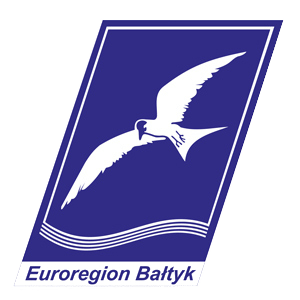Informacje z Euroregionu Bałtyk

WaterMantl-ne News Projects WaterMan English pll_664480e808184 WaterMan
Study Trip Water reuse in practice: Co-existence with water scarcity in the Region of Murcia in Spain
11 May 2024
Study Trip to gain knowledge about best practices of Water reuse in practice: Co-existence with water scarcity in the Region of Murcia in Spain 23-25 April 2024
23.04.2024
The first day of the event started in the Directorate General of Water Management of the Region of Murcia where participants were welcomed by José Sandoval Moreno who is the General Director for Water at the Ministry of Water. In Murcia Region, they have rainfall below 300mm and they have 3000 sun hours/year. They modify their irrigation system and combine it with the WWTP system.
Lead Partner also welcomed participants and Mr Tobias said a few words about the project idea and why it was created.
Mr Manuel Boluda made a presentation about Spanish water management. They have 3 levels of sharing management responsibilities of water state administration, autonomous communities and municipalities. Water belongs to public authorities, and local water use concessions can be obtained for up to 75 years. In Murcia, they have a set order in which they use water (water for people, irrigation and agriculture, hydraulic energy storage…) They are collecting rainwater to use it for different purposes. They have three water management options: directly, through qualified companies, public procedures. The municipality is in charge of collecting water and sending it to WWTP. The largest share in water use is agriculture 82%, industry 9%, household 6%, and ecological 3%. They have just 15% of ground water and 50% is surface water. They invest heavily in water collection facilities.
Mr Jose Luis García made a presentation about Groundwater overexploitation: A consequence of water scarcity. As UNESCO said we should use groundwater to irrigate 65% and around 25% of basins are in bas status – low level of the water. In Spain, they are using 4 types of water: groundwater, surface water, imported water from the Taus river basin and reclaimed urban water. General in Spain they have a problem with high levels of salinity in the water.
Participants visited the Water Purification Station in San Pedro, where Mr Pedro Simón told them about the conditions of Water reuse for agricultural purposes. In the Murcia region, they mostly produce products from agriculture. In 91,4% they are using water reused mostly for agriculture. They remove a very large percentage of SS, COD and BOD.
In their Water Purification Station, they prepare the water by removing all solids by filtration and disinfection to get to the end water in class A.
As WWTP they prepared a risk assessment of water which came out from them. Each day they are working on improving their effectiveness, harmless and treatment reliability. They are testing new solutions to improve the quality of food. They are working to convince people that this kind of water is good and safe. In the region, they have 100 reclamation plants. At this moment farmers don’t pay for the water and inhabitants pay it in their taxes. To clean water from solids they are using membranes looking like “spaghetti”. People’s awareness of the use of purified water is quite high and they use it to water their gardens. Only 1% goes to residents, and 99% is water for farmers.
Visit to a pond to collect rainwater, incl. explanations of the functions of the facility.
The last point of the day was the visit of the Murcia Este WWTP: Indirect water reuse in the City of Murcia. Participants were welcomed by the host and got information about how they were working on WWTP. Employees described on the model what their plant looks like and how it works. WWTP is a facility for treating urban wastewater collected by the sanitation collector system. They are equipped with advanced systems where they use different water treatment methods such as pretreatment, biological treatment and secondary sedimentation. On the WWTP is also a sludge line where they manage two types of sludge: those from primary sedimentation and the biological sludges from secondary sedimentation. They also are using biomateria to produce biogas which they are using for their own needs.
24.04.2024
Visit of the Irrigator Community of Campo de Cartagena. They have a few rules about connecting water pipes, including you have to be in a designated area and be a farmer. In this network, there are around 10.000 members. The main problem is high levels of water salinity, which they have to treat which is expensive. Water for residents is supplied by a semi-private company. They would like to build a desalination station, but it is a costly investment. To build their station they need many agreements and documentation. They have electronic systems which control how much water is consumed by individual farmers.
Mr Manuel Boluda talked about the GEMS project where they use salinated water to irrigate fields. They want to improve policies related to the sustainable use of groundwater and they would like to have a pollution monitoring system and nitrate agricultural pollution.
The last place of the study visit was Dinapsis the Digital Operation Center for the water sector. They are working with challenges connected with climate change using new technologies and cooperating with municipalities. They have 12 hubs in Spain where through technology they want to help people and solve their problems connected with climate.
25.04.2024
The last day of the event was devoted to internal design matters, during which partners and meeting participants expressed their opinions on the information presented during the two days.
